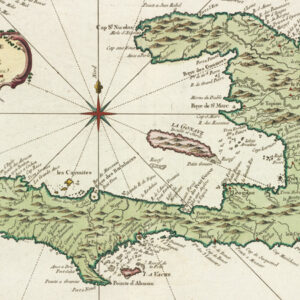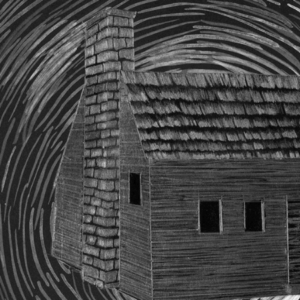
The Best of 1970s and 80s Women-Authored Science Fiction and Fantasy
David L. Pike on Suzy McKee Charnas, Ursula K. Le Guin, Leslie Marmon Silko, and More
A late baby-boomer, I spent my tweens and adolescence in the 1970s under the Tolkien-woven spell of heroic fantasy, immersed in the imagined worlds of Ursula K. Le Guin’s Earthsea trilogy (1968-72), Patricia A. McKillip’s Riddlemaster trilogy (1976-79), and Evangeline Walton’s Welsh-myth-remix Mabinogion tetralogy (1970-74). But I never really paid much attention to who had written them or what that might mean about why I liked them so much. It wasn’t until researching a book on Cold War culture in the 1960s and 1980s that I discovered that these were only the tip of an extraordinary corpus of woman-authored works that I now recognize as the emergence of a major force in science fiction and fantasy (SFF) from the mid-70s through the 80s that has since become, quite simply, a—if not the—mainstream of the genre, period.
Nor did my adolescent self, lost in the imagined worlds of Le Guin’s, McKillip’s, or Walton’s fantasies, make any connection at all to the Cold War world in which I was reading them. Those connections are certainly lurking, if one wants to see them, in, for instance, the magician Ged’s epic battle with a world-destroying evil he has unwittingly unleashed on the archipelago of Earthsea through hubristic meddling with a dark and powerful magic he does not yet understand, or in the hard-to-grasp, difficult-to-control, and morally ambiguous power attributed to magic more generally in SFF of this period.
They are explicitly present in a mostly lesser-known body of postapocalyptic science fiction ranging from Le Guin’s own multimedia masterpiece Always Coming Home (1985) to the radical feminism of Margaret Atwood, Joanna Russ, Suzy McKee Charnas, Sally Gearhart, and others, to the more conciliatory visions of later work in the same decade.
Feminist science fiction was archived, debated, and dissected in the pages of influential new fanzines such as the Madison, WI, based Aurora (renamed Janus in 1980) and gatherings such as WisCon, the Madison feminist convention sponsored by SF3 (Society for the Furtherance & Study of Fantasy & Science Fiction). Atwood’s Handmaid’s Tale was, of course, widely praised at the time, although it would be a long time before Atwood or many of her readers would be fully comfortable with the label of “science fiction” or “speculative fiction” that, in retrospect, so obviously suits it.
And others of these authors—especially Octavia Butler, who is finally having her long-delayed (and very likely to be enduring) moment—are now being widely recognized for their groundbreaking repurposing of the conventional tropes of genre science fiction and fantasy to build what scholar Katherine McKittrick describes as “site[s] of radical possibility, supernatural travels, and difficult epistemological returns to the past and the present” and Fredric Jameson as “imaginary enclave[s] within real social space.”
Here’s a highly subjective shortlist of the woman-authored SFF novels I found most compelling for my own project on Cold War culture and fantasies of bunkering.

Suzy McKee Charnas, Walk to the End of the World
As their title suggests, the Holdfast novels are set in a brutal postapocalyptic dystopia in which neo-barbarian men rule with brute force over the “unmen”—animals, mutants, non-whites (“Dirties”)—and women (“fems”) still surviving within the confines of the ironically titled “Refuge.” Narrated in four sections from four different perspectives—the first three men’s and the last a fem named Alldera—Walk to the End of the World (1974) documents its society’s distortions from within, subjecting the reader to the internal logic of the pernicious ideology that has formed not only the men of Holdfast, but also its women. In the sequel Motherlines, Alldera escapes over the mountains into the open plains of what was once California’s Central Valley. Here she encounters the Riding Women, a matriarchal tribal community that reproduces using cloning techniques learned while bunkered for the war. In this equally violent world, Charnas explores the tension between women formed in a patriarchal world and those raised outside of its constraints and ideologies.

Vonda McIntyre, Dreamsnake
McIntyre’s brilliant novel is set in a distant postapocalyptic future of shelter communities scattered across a wasted and still-radioactive landscape. Dreamsnake (1978) explores the complex surface societies and ecosystems that have emerged out of the blasted society. The heroine is the wandering healer Snake, whose magical methods involve poisonous serpents: a rattlesnake, a cobra, and the eponymous serpent, very small, very rare, and green, with special powers that kills dying patients painlessly while dreaming. McIntyre’s first novel, The Exile Waiting (1975) takes place underground on the same world. It details the decadent society of Center that has developed within the vast spaces of a former nuclear supershelter, ruled with an iron hand from the Stone Palace by the Families, a hereditary oligarchy. Visibly different children are banished to the mysterious cave system deeper underground, where the heroine, Mischa, who was born with psychic powers but no physical mutations, eventually flees to these alternate communities in search of a rumored spaceship on which to escape to a utopian interstellar network named “Sphere.”

James Tiptree, Jr., Houston Houston Do You Read?
This Hugo and Nebula award-winning novella was originally published in an anthology by Vonda McIntyre and Susan Janice Anderson entitled Aurora: Beyond Equality, and has been reprinted in various collections since. Tiptree, Jr. was a pseudonym of Alice Sheldon, and from 1968 until 1976 a secret one; the gender politics of Tiptree, Jr.’s writings and identity were mobilized by all sides in debates of the time about women in SFF. This wicked gender reversal tells of the time-slipped encounter of a clueless trio of mid-70s men with the highly advanced futuristic utopia of female survivors of an apocalyptic plague. They have perfected space travel, created a base of eleven thousand genotypes for cloning “sisters,” as they call them, and mostly worked to forget the disastrous Earth history that led them into space. The men struggle to understand a world in which even more than unneeded and unwanted, they are simply forgotten except insomuch as vehicles to reach us readers back in a world still distorted by their shelter society and warmongering.
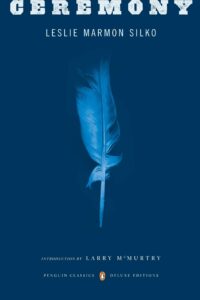
Leslie Marmon Silko, Ceremony
Like The Handmaid’s Tale below, Laguna Pueblo writer Silko’s American Book Award-winning novel is not typically identified as SFF. But in a present day when Ohkay Owingeh Pueblo writer Rebecca Roanhorse can claim the genre as her own precisely because “We’ve already survived an apocalypse,” it seems obvious to me what was long called magic realism is really the adaptation of SFF tropes to Black, Indigenous, or global-South contexts and life worlds. Silko’s tale of a mixed-race World War II veteran working through PTSD with the help of a mixed-race Native healer is equally a critique of nuclear colonialism that frames the predations of uranium mining, the laboratories of Los Alamos, and the bombing of Japan within nonlinear spacetime as a brief episode in a much longer struggle of Indigenous peoples against “witchery.”

Suzette Haden Elgin, Native Tongue
A professor of linguistics as well as an SFF author, Haden built the secret world within Native Tongue around the Sapir-Whorf hypothesis that the language used determines what can be thought. Set in a near-future that feels like a slightly less total version of Atwood’s dystopia in The Handmaid’s Tale (published a year later), Elgin’s novel is set within Chernyak House and its sister enclave Barren House, where women beyond childbearing age raise young children until they are old enough to join the simultaneously marginal and powerful patriarchal community of linguists who are trained from a young age to communicate with aliens. Doubly oppressed by their Household and the theocratic society around it, the women of Barren House invent a secret language, Láadan, that essentially creates a new reality for them within the otherwise constrained reality of their lives. Elgin published a grammar and dictionary of Láadan in 1985, and two sequels to Native Tongue: The Judas Rose (1987) and Earthsong (1993).

Ursula K. Le Guin, Always Coming Home
Like Elgin’s debt to linguistics, Le Guin invented a postapocalyptic world whose conception owes as much to the forms of anthropology, archaeology, and ethnography as to those of SFF. Originally published with an audio cassette and presented as a loose collection of texts assembled from field research and oral history by an unnamed researcher, Always Coming Home (1985) fashions something like a utopian future from the same postapocalyptic conditions which in much of feminist SFF results in starkly dystopian visions. Like Silko, Le Guin imagines what a world might look like in which the shelter society and bunker fantasy were merely one deleterious but constrained piece of a larger, functional whole, rather than the destructive model of a world heading towards extinction.

Margaret Atwood, The Handmaid’s Tale
This novel needs no introduction. While Tiptree imagines a utopian female future so wide open and comfortable in its constraints that it confidently wanders outer space and has established domed communities on Mars and the Moon, Atwood imagines a dystopian society so closed that only language constitutes any kind of safe preserve for Offred and her sister Handmaids. By the novel’s end, all Offred has left is the story we are reading, told in the words, tropes, and forms of the equally male-dominated province of letters, and recorded for posterity on pirated audiocassettes, but hoping to find a future audience from within this enclosure.

Pamela Sargent, The Shore of Women
In Sargent’s ambitious epic, women have survived nuclear apocalypse to build high-tech, transparently domed cities from which they dominate neo-barbarian bands of beastlike men. Rather than the cloning of other novels, Sargent’s women keep their men in check with long-distance pornographic video content and use similar technology to milk their sperm at the city walls. The hard-edged but conciliatory plot follows the fraught relationship between a young woman exiled from the city and a young man who reminds her of his sister, a former lover. Their wanderings allow Sargent to survey a carefully imagined landscape of permutations on gendered communities and enclaves.

Octavia Butler, Xenogenesis trilogy: Dawn, Adulthood Rites, Imago
Years before her barely speculative near-future slow-burn apocalyptic series Parable of the Sower (1993) and Parable of the Talents (1998), Butler’s Xenogenesis trilogy (1987-89) explored a far more fantastic SFF future in which gene-sequencing aliens colonize a wasted postapocalyptic Earth to interbreed with a select population of surviving humans. Imagining symbiotic relationships that are as enslaving as they are utopian (illustrated in my 1988 edition of Dawn as white, despite the Black-identified human protagonist within its pages), Butler compels the reader into difficult meditations on the meanings and borderlines of identity, difference, and autonomy through her characteristically suspenseful and economic storytelling.

Joan Slonczewski, The Wall around Eden
Written by a microbiologist, Wall around Eden (1989) has three features still rare in 1980s feminist SFF outside of Octavia Butler’s works: credible biological speculation, a woman of color protagonist, and a deeply felt pacifist and religious context. The main characters are descended from antinuclear activists and debate the religious and pacifist ramifications of their decisions. The SFF plots involve alien “keepers,” who have preserved humanity by containing a fixed percentage of survivors within geodesic domes. The domes block enough radiation to keep the confined humans alive, but not enough to prevent sickness and mutations. While plotted as a survival adventure, Slonczewski’s novel is centrally concerned with the costs and tradeoffs of survival in a postapocalyptic, irradiated world.
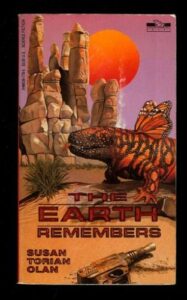
Susan Torian Olan, Earth Remembers
Set in a Texas at least 1,000 years following a nuclear cataclysm that transformed its coastline and sent its technology and political structures into a neo-barbarian Dark Age, Earth Remembers (1989) reads like a spaghetti Western mashup set in a mythic present. The hodgepodge of players includes: a Pecos cowboy, a Mexican bandit general, a mercenary refugee from Lagos, a Toltec curandera whose cloud forest mountain city survived as an island enclave separated by the war from Guatemala, the last surviving giant from the prehistoric race of Paleoricans or “People of the Earth,” and a female itzaur, whose race dates back forty million years to the dinosaurs. Published to capitalize on the growing popularity of Dungeons and Dragons and set in the RPG’s world, Earth Remembers is an unmistakable potboiler that nevertheless exceeds the limitations of its origins in wild imagination and entertainment value.
*
For more on this body of writing that deserves to be much better known, see also these invaluable sources:
The fifteen-year run of Janus /Aurora (available online at the SF3 website); Sarah LeFanu, In the Chinks of the World Machine: Feminism and Science Fiction (1988; Bristol: SilverWood, 2012); Helen Merrick, The Secret Feminist Cabal: A Cultural History of Science Fiction Feminisms (Seattle: Aqueduct P, 2009); Suzette Haden Elgin, Native Tongue (1984; New York: Feminist P at CUNY, 2000); Strange Matings: Science Fiction, Feminism, African American Voices, and Octavia E. Butler, ed. Rebecca J. Holden and Nisi Shawl (Seattle: Aqueduct Press 2013); Luminescent Threads: Connections to Octavia E. Butler, ed. Alexandra Pierce and Mimi Mondal (Yokine, WA: Twelfth Planet Press, 2017)
__________________________________
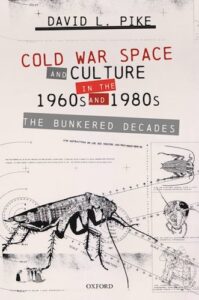
Cold War Space and Culture in the 1960s and 1980s by David Pike will be available from Oxford University Press on February 3, 2022.
David L. Pike
David L. Pike has taught in the Department of Literature at American University since 1995. He is the author of Passage through Hell: Modernist Descents, Medieval Underworlds; Subterranean Cities: The World beneath Paris and London 1800-1945; Metropolis on the Styx: The Underworlds of Modern Urban Culture, 1800-2001; Canadian Cinema since the 1980s: At the Heart of the World; and articles on medieval literature, modernism, film, neo-Victorianism, subterranea, urban fantasy, global urban culture, and Paris and London. He is co-author of Corruption Plots: Stories, Ethics, and Publics of the Late Capitalist City and of Literature: A World of Writing, and co-general editor of the Longman Anthology of World Literature.

















